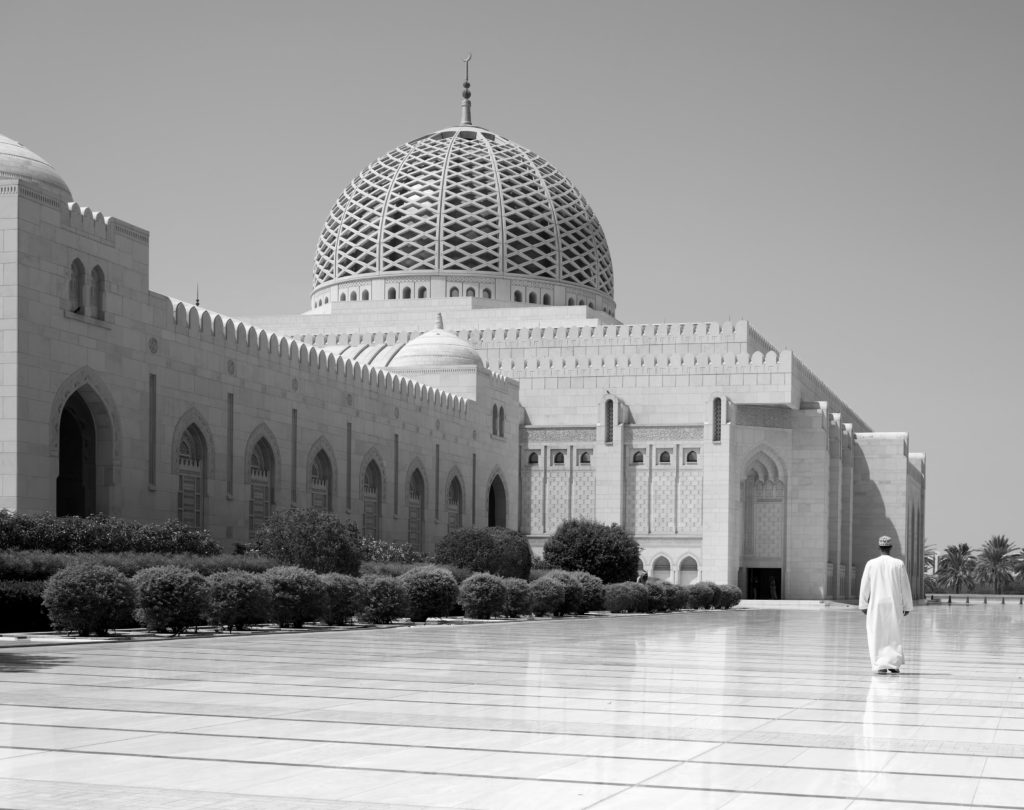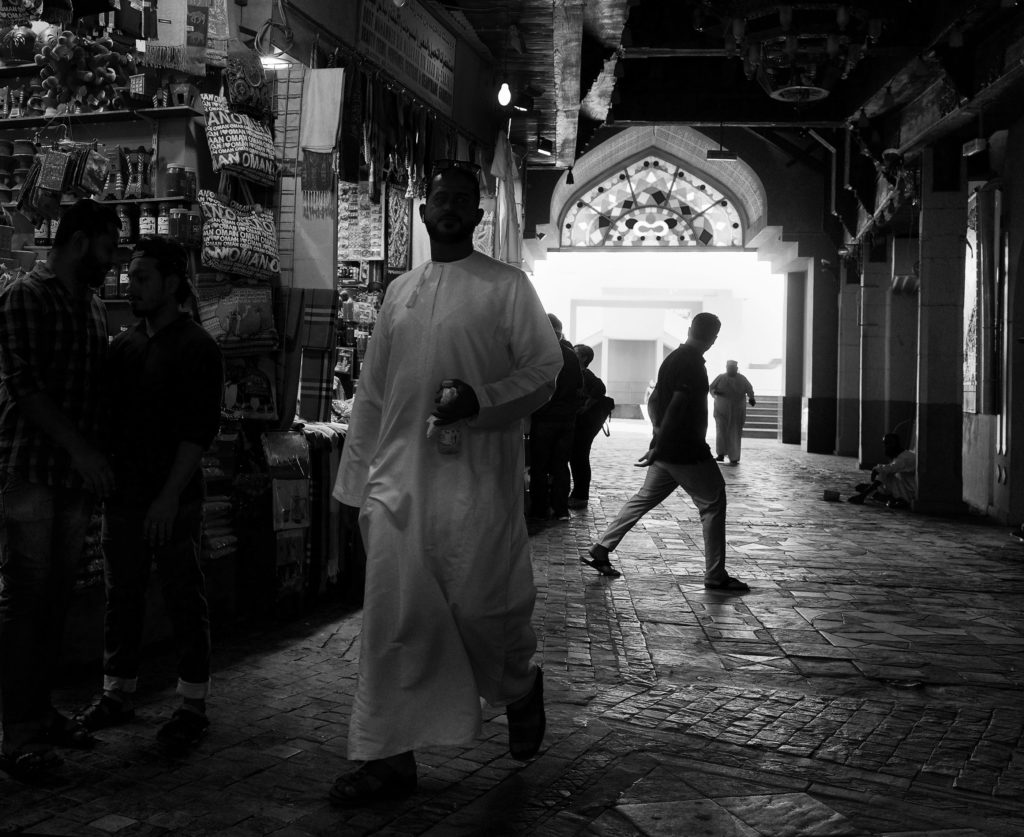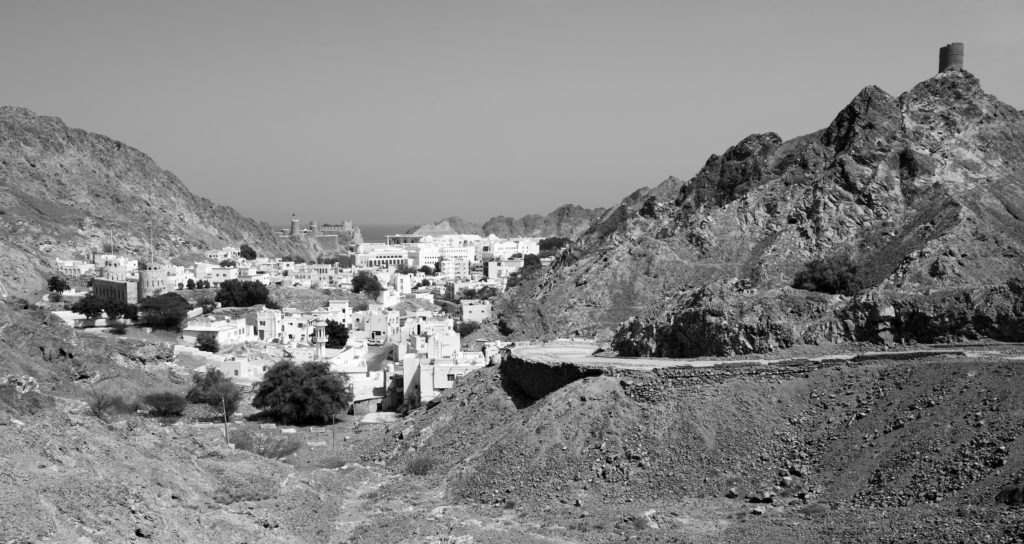Though I’ve seen a little of the Middle East from trips to Dubai and Doha, I didn’t feel like I’d really experienced much in the way of authentic local culture from visiting those sleek, high rise metropolises. Each time I was in Dubai I took the opportunity to venture into the sands of the Empty Quarter, which was exciting but almost entirely devoid of local people. It was these safaris which whetted my appetite for a more authentic experience and genesis for this trip from Muscat to the mountains. Unlike Dubai, Oman is not yet a widely recognised holiday destination, so reactions to news of my trip were often quizzical.
It’s certainly true that Oman, particularly the mountainous interior, has only opened up to the West relatively recently. The Omani coast was captured by the Portuguese in 1507 but by 1650 they had been driven out and tribal conflict made the country difficult to explore beyond the coast into the 1940s. Explorer Wilfred Thesiger’s superb Arabian Sands, a haunting tale of the last years of the Bedu way of life describes how challenging it was. Despite spending five years in the sands of the Empty Quarter he was prevented from exploring Jebel Akhdar, the Green Mountain, which would I would be visiting.
I planned a two centre trip to the Sultanate on the basis of some traveller’s recommendations, a chat with my excellent travel agent and a little research. I arranged to have guides, on this trip in both locations, as there is no substitute for local knowledge. Both my guides were excellent and made a huge difference to the trip. From my research I learned that Oman is safe, with a friendly and welcoming people, an incredibly scenic landscape, many heritage sites and a rich culture. Over the course of the week I found all this to be true. As a Brit, I was also interested to learn of the long-standing friendship and strategic relationship between the UK and Oman.
A Greeting with a Khanjar
I flew into Muscat via Doha on Qatar Airlines and stayed at The Chedi, a tastefully appointed beach front hotel in the Al Ghubrah district of the city and set in an oasis-style location. I was greeted by a smiling doorman wearing a Khanjar, a traditional curved dagger, in an ornate sheath. The Khanjar has a long history and is still worn ceremonially in Muscat and day-to-day in mountain cities like Nizwa. The image of a Khanjar forms part of the Omani flag, and is present on banknotes and all official documents. I had seen nothing like it before and it made me think that that the week was going to be a bit different – which proved to be the case.
Muscat sits between the mountains and the sea and extends down the coast for some 30km. It is a low rise, architecturally conservative city and very different from Dubai or Doha by design. As impressive as the skylines of those two high rise cities are, neither can match Muscat for heritage.
Since 1970 Oman has been transformed by the current ruler, Sultan Qaboos, who has pursued a comprehensive modernisation program since he replaced his father, supported by the British military, including the SAS. Unsurprisingly, his influence can be seen most strongly in the capital.
Sultan Qaboos Grand Mosque

The first place I visited in Muscat was Sultan Qaboos Grand Mosque. This was built in Modern Arabic style to celebrate 30 years of the Sultan’s rule and one of only a few mosques open to non-Muslim visitors.
As my trip was in September when the temperature in Muscat is still quite high it was extremely quiet. When almost deserted the sheer scale of the design – which can accommodate 20,000 worshippers and took 300,000 tons of Indian sandstone to construct – appears all the more impressive.
I was struck both by the scale and and the elegance of the modern Arabic architecture. The latticed dome of the main prayer hall rises to 50 metres, and the main minaret is 90 metres tall. It is flanked by four half height minarets. If you have limited time in Muscat I’d make the Grand Mosque a must see.
My next stop was the Royal Opera House, which is another building developed at the Sultan’s request and was built in limestone by the same architects as the Grand Mosque to a similar modern arabesque design. The exterior makes the ROH worth a stop, and you can also take a short tour inside, where productions are being readied.
The Port of Muttrah
From the opera House I headed west to the old port of Muttrah, which is close to Old Muscat.
The 4000 sq. m fish market is a modern Scandinavian design that takes pride of place on the waterfront of the Muttrah Corniche. Completed in 2017, the form of the canopy was inspired by the flow of Arabic calligraphy. The building replaces the open air bazaar of old. The attraction of fish markets for me is the animated negotiations of the fishermen and the fish mongers – it’s pure theatre and I’ve seen some great examples of that in Tokyo and Catania, Sicily on past trips.
As always, if you can get to the market early, you’ll see it at its lively best. I arrived late on my first visit after seeing the Grand Mosque and the market was very quiet, so I returned at 8AM the following morning and was rewarded with a much more animated spectacle.

Close by is the Muttrah Souk, known locally as Al Dhalam (Darkness), after the original dim lighting conditions. It is one of the oldest markets in the Arab world and also one of the few markets you can purchase gold, frankincense and myrrh under one roof. That roof was originally palm leaves, supported by mud walls, but it is a modern structure today and you can whip through the main drag very quickly. You’ll see a lot more and get a better sense of the place If you venture off into the tangle of narrow alleys that branch off from the main artery, where the stalls are more varied. Wool pashminas, frankincense, leatherware and gold jewellery, which is sold by weight, are amongst the many goods on offer.
The accompanying photograph of the Souk breaks plenty of photographic rules, and I probably would not have used it before I came across the work of William Klein. I am glad of what I learned from the early master of street photography because the image captures a much better sense of the souk than any of my other pictures.
Further along the Corniche is the Muttrah fort, built by the Portuguese in 1580, which provides great views of the curve of the Corniche around the old port. On the day of my visit traditional dhows rubbed shoulders with the one of the Sultan’s yachts.
From the fort Corniche leads to Al Riyam Park which is overlooked by giant frankincense burner, which resembles a white 1950s UFO.
Old Muscat

I was keen to photograph Old Muscat from the road – you can see the shot on the left. The old town is located in a rocky valley and looks specular from when viewed from the road. The old town contains the Al Alam Palace and the Bait Zubair Museum, both of which I visited.
The Bait Zubair Museum is a private ethnographic museum and part of a cultural foundation. It is much smaller than the National Museum but it is well worth the time.
A visit provides some good insights into Omani traditions, including clothing, jewellery, household items and historical weapons, including the Khanjar. Carrying rifles and earlier long guns is a tradition in Oman and the association between Oman and Britain was evident from the rifles on display including modified Lee Enfield and ‘Muscat Martini’ rifles. These were heavily decorated with silver which still plays an important role in all things decorative today.
The Al Alam Palace, which means “The Flag” in Arabic, is one of the Sultan’s six royal residences. It is used only for official functions and you can’t enter the palace or grounds. The palace is is flanked by 16th century Portuguese forts perched on rocky hills so the approach to it is extremely impressive.
I finished my stay in Muscat with dinner at The Beach Restaurant, an excellent seafood restaurant where you can watch the sun go down over the Gulf of Oman amongst traditional Arabian fire pits.
The next day I was up early to head for Jebel Akkdar, which is the subject of my next post.